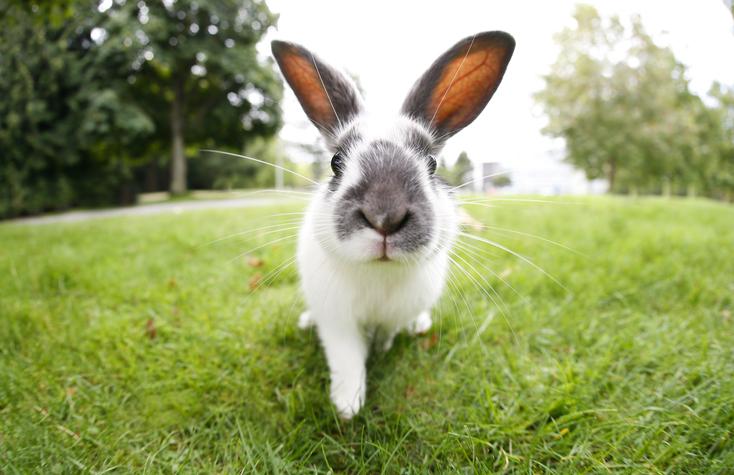
When I was in my early teens, my family owned two rabbits, at different times. Technically, they were my brother’s rabbits, but myself and my parents spent far more time looking after them than he did! Both were lost to us at a young age and when I think back, although they certainly didn’t have a bad life, we were quite uneducated regarding our understanding of rabbits, thirty years ago.
They lived alone in the hutch at night, which was moved into the garage during the winter, frequently had free run of the garden during the day and were fed a ‘muesli’ diet along with fresh cabbage and fresh grated carrots, with access to what was probably low-quality hay. Thumper, the first of these two was a very nervous Netherland Dwarf-type bunny who didn’t really seem to want human company and was happiest doing his own thing in the garden. Pip, the bunny who followed was a Mini-Lop who would sit on the doorstep for hours, waiting for someone to go out and stroke him; we were amazed that a rabbit could behave like a little puppy! Rabbits were not routinely vaccinated then and I am sure most only visited the vet if they became unwell (if they were lucky!). Most rabbits were expected to die under anaesthesia if they required an operation, which was actually what happened to Thumper.
Twenty-five years later, whilst working as veterinary nurse at a practice which did some shelter work, I met a new arrival, a one-year-old Mini-Lop (recently renamed Eric, by the shelter) who was in for radiographic assessment of his maloccluded incisors. A week later, he returned to have them removed, I fell in love with him and decided to adopt him. He was the spitting image of our beloved Pip, both in appearance and personality. Unlike his predecessors, he was to become an indoor companion rabbit and I became a bit obsessed with trying to ensure he had the best possible life I could give him, especially as he would continue to be a lone rabbit due to pre-existing respiratory disease. By then, vaccination and anaesthesia of rabbits was routine (he had already recently undergone two anaesthetics and come out the other end!) and information on providing the best environment, diet and enrichment for rabbits had become widespread and easily accessible. He had a much longer (and I think, happier) life than Pip and Thumper, although it was marred in later years by his multiple advancing health issues; respiratory disease, ear disease and dental disease, all sadly a direct result of his breeding.
Understanding of the complex biological and emotional needs of these animals, the ability to insure rabbits and huge advances in rabbit medicine, along with safer anaesthetic techniques, has undoubtedly improved the quality of life for many bunnies. That said, breeding of extreme conformations and mass production of baby rabbits for the pet market continues to adversely impact on the welfare of these animals. The sad fact is that the vast majority of us (myself included) cannot easily provide all that a rabbit requires to lead a long, healthy and emotionally fulfilled life.
We need to continue to educate the public that these animals are not the cheap and easy option for their children and make it more difficult to source a rabbit. Responsible breeding should be encouraged; we must breed out the brachycephalics and lop-ears. These measures will have a positive impact on rabbit welfare and this will hopefully result in a significant reduction in rabbit admissions into already over-stretched shelters. We have come a long way in improving the lives of our rabbits, but there is still more which can be done.
Sarah Flack BSc (Hons) (Pharmaceutical Chemistry) PGCE Cert VNES Cert VNECC RVN
Find out more about the UK’s largest organisation for rabbit lovers here.
